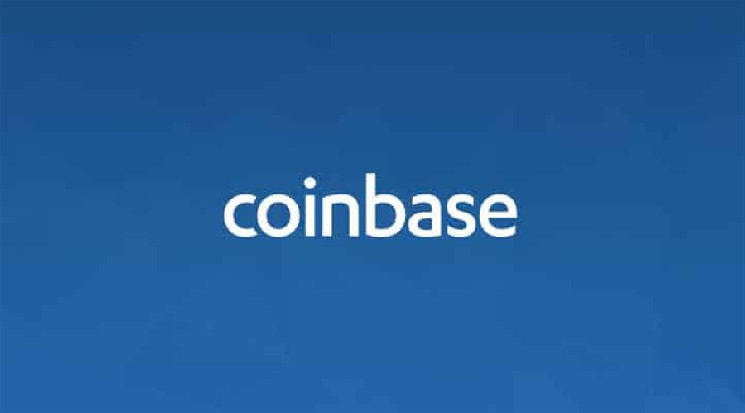Coinbase, a renowned digital asset company, recently made headlines with the launch of its Layer-2 network. This revolutionary development has the potential to transform the user experience and efficiency of platform transactions.
Understanding the basics
Layer-2 solutions are protocols that are implemented on top of current blockchain networks to improve scalability and reduce transaction costs. The Layer-2 Network is a strategic initiative by Coinbase to overcome the issues associated with the scalability of the Ethereum blockchain, on which Coinbase largely operates.
Essentially, the Layer-2 network serves as an overlay, allowing faster and cheaper transactions by processing them outside the main Ethereum blockchain. This is achieved by setting up a secondary layer that handles the majority of transactions and only occasionally reaches the main network. As a result, users benefit from a simpler and more cost-effective approach.
User benefits
Coinbase users will benefit greatly from the implementation of the Layer-2 network. The reduction in transaction costs is one of the most important benefits. Due to network congestion, traditional blockchain transactions often incur significant costs. Layer 2 transactions occur off-chain, reducing congestion and, as a result, costs. This is a nice relief for those frustrated by the unpredictability of transaction fees during peak periods.
Moreover, the Layer-2 network improves transaction speed. Users receive confirmation of their transactions almost immediately, as transactions are handled off-chain and periodically settled on the main blockchain. This solves a common source of irritation in the bitcoin community: delays in transaction confirmations.
Improving the DeFi experience
Coinbase’s Layer-2 network is especially important in the context of decentralized finance (DeFi). DeFi applications that use blockchain networks sometimes suffer from problems such as high transaction fees and poor confirmation times. The Layer-2 solution prepares the Coinbase platform for a more seamless and user-friendly DeFi experience.
Users engaged in decentralized exchanges, lending, and other DeFi activities will benefit from the efficiency and cost-effectiveness of the Layer-2 network. This not only improves the overall appeal of DeFi, but also aligns with the broader industry trend of making decentralized financial services more accessible to a wider audience.
Manage potential obstacles
While the Layer-2 network has many benefits, it is critical to be aware of potential issues and concerns. Interoperability with other Layer-2 solutions is an important factor. Because the bitcoin ecosystem is diverse and there are numerous Layer-2 solutions available, enabling seamless communication and compatibility across multiple networks is critical to broader adoption.
Furthermore, the security of off-chain transactions requires close supervision. Although Layer-2 solutions employ strong security measures, the decentralized nature of blockchain requires constant monitoring. As an industry leader, Coinbase must continue a proactive approach to security and assure users that their funds will be protected even under this new operating paradigm.
The future of Layer-2 and the role of Coinbase
The use of Layer-2 technology represents a major step forward in Coinbase’s progress as a bitcoin platform. Not only does it demonstrate the company’s commitment to improving the user experience, but it also places Coinbase at the forefront of technological innovation in the industry.
Looking ahead, the Layer-2 network lays the foundation for future developments. It is expected that additional capabilities and upgrades will be provided as the technology grows, strengthening Layer-2’s role as an essential part of the cryptocurrency infrastructure. Coinbase, with its large user base and industry influence, is well positioned to drive and shape the future of Layer-2 technologies.
Coinbase is leading the way: transparency and trust in the crypto industry
In the ever-evolving landscape of cryptocurrencies, transparency and trust have become crucial, both for established players and emerging projects. Recently, Coinbase took an important step that demonstrates their commitment to these principles. Coinbase’s Base Layer 2 network has become open-source, marking a crucial step toward transparency and community collaboration.
By open sourcing its code repositories, Coinbase’s Base Layer 2 network invites developers from all corners to explore, contribute, and improve the project. This move streamlines development tasks, promotes collaboration, and brings the crypto community closer to the heart of the technology. Developers now have access to Base’s core code, simplifying several tasks including contract management and deployments.
The decision to use open source aligns with Coinbase’s vision of a decentralized and inclusive technology platform. It’s not just a one-off gesture, but part of their broader support for open source initiatives, highlighting their commitment to a crypto ecosystem built on trust.
Coinbase’s open source approach introduces a host of benefits. It brings transparency to the activities in the chain and accelerates community-led audits. With public access to smart contract repositories, the crypto community can scrutinize code for vulnerabilities, allowing for faster fixes. In addition, Coinbase has launched a bounty program through Coinbase HackerOne, offering rewards of up to $1 million for identifying codebase vulnerabilities, creating strong incentives for security and trust.
Conclusion
Finally, Coinbase’s Layer-2 Network is emerging as a game changer in the cryptocurrency sector, promising an improved user experience, lower transaction fees, and faster transaction confirmations. The Layer-2 Network not only addresses current issues, but also lays the foundation for a more efficient and accessible cryptocurrency economy, especially in the area of decentralized finance. As this innovation unfolds, users and industry observers alike should keep an eye on its progress and its implications for the broader digital asset landscape.

